When Kristina Posner ’20 arrived at the College of William and Mary in August to begin her senior year, she entered her dorm room in Bryan Hall for the first time and was met by a large, looming spot of black mold speckled on the ceiling.
“As soon as I walked in, I noticed there was a huge spot of black mold on the ceiling tile,” Posner said. “I was super confused why that was there, just because I was an RA for the past few years. I know that they’re supposed to go into the rooms to check all this stuff. It was super confusing because we were kind of on a time crunch, so I was like ‘Why is this here?’ I knew black mold, that is not a thing they will let you live with, so I couldn’t even move my stuff in.”
Posner was only allowed to move some of her belongings into her Bryan room Aug. 26, two days before classes started. Posner and her roommate were placed in a temporary room in Richmond Hall until the first day of classes Aug. 28. Facilities personnel told Posner that the mold originated from poor insulation of pipes, which tend to get sweaty due to the extreme humidity during summer months.
As a result of the mold discovered in Posner’s room, all other residents on her side of the hall were prevented from moving in until Aug. 28. Posner said she suspects that Bryan’s mold problem was larger than Facilities Management initially thought, especially because they had to access a large pipe and address insulation problems throughout the hall. Posner said that facilities was not surprised to see the mold in her room.
“When we were moving my stuff into my room on Monday, there were a couple facilities people there,” Posner said. “This was very normal to them, that this happens, so I guess it happens pretty often, because they knew exactly what was wrong. They were like ‘oh yeah it’s the pipe, they get, in the basement, especially, really sweaty because of the humidity.’ And it was just kind of like, ‘Okay, if you know this is an issue, why wasn’t this fixed over the summer or why don’t you guys look out for this?’”
Posner’s experiences in Bryan mirror other students’ encounters with mold around campus, and it continues to be an ongoing reported issue found in on-campus residential buildings. According to Director of Environmental Health and Safety Teresa Belback, the incidents are often reported in older facilities that were originally designed with no air conditioning. Belback said that her office has continued to receive complaints about mold in on-campus housing this year. She said that the number of mold related reports tends to increase at the beginning of semesters, after extended periods in which the buildings have been closed.
The Randolph Complex and Richmond Hall frequently receive mold complaints, and One Tribe Place closed at the end of the spring 2019 semester to undergo renovations addressing mold remediation among other structural updates. Yates Hall has suffered several closures due to widespread reports of mold and mildew. Cases of mold have also been found in Old Dominion Hall and DuPont Hall.
Belback said in an email that her office received 136 work order requests from students to investigate mold issues in residential buildings during the 2018-19 school year. According to Belback, this is an increase from the average 108 cases reported per school year.
She attributed the spike in mold service requests to the record-setting rainfall in 2018. She said that the record rainfall, consistently high temperatures and significant hurricane activity facilitated favorable conditions for mold development.
Since 2015, issues of mold in on-campus dorms have been a persistent problem for the College. Mary-Beth Berg ’15 threatened to pursue legal action against the College in 2015 for injuries she thought were related to mold in her Ludwell Apartments residence. Berg asserted the College had prior knowledge about the mold in her room before move-in. Additionally, The Flat Hat reported multiple alleged incidents in fall 2014 regarding the College’s mismanagement of mold reports in basement rooms in Landrum Hall.
Richmond Hall
When Alondra Belford ’21 moved in early to Richmond Hall this fall, she smelled what she thought was mold in her dorm room. She tried to keep the door open as much as possible and kept a couple fans blowing in her room to air to out the smell. After 10 days of living in her room, she found out that the residents in the adjacent room were being permanently relocated to another room in Richmond Hall because of black mold found on the shared wall between their room and Belford’s. At this point Belford became aware of how serious black mold exposure is and realized that her health could be affected.
Belford spent another night in the room after contacting Facilities Management but reaching them after hours. When she woke up Aug. 27, she saw the mold from the room next door had made its way into her own room.
“I woke up on the morning of the 27th and I could see the mold on my wall, on the same side as that wall from the other room,” Belford said. “In addition to that, I also had an AC leak that was happening in the room above me and the water was causing the formation of mold in my ceiling on the opposite side of the room.”
Belford said she was informed the evening of Aug. 27, the night before classes started, that she had to temporarily move across Richmond Hall to another room. Belford lived in an alternate room from Aug. 27 until Sept. 13, when the mold was supposedly being removed from her original room.
After moving into Richmond Hall, Belford said she had a scratchy throat, a frequent cough and had headaches that could not be alleviated by ibuprofen.
“It is kind of like having allergies except you just kind of feel it in your throat, you don’t really feel anything in your chest or your stomach,” Belford said. “I lost my voice for part of it. I had a really raspy voice.”
Belford visited the Student Health Center Aug. 28. Belford said that she was told that she had mold-induced asthma and was subsequently prescribed an inhaler and additional allergy medication.
“I went to the Health Center on the first day of classes just because it was getting to the point where I could barely speak,” Belford said. “What they told me was that I had mold-induced asthma and that my bronchial tube had kind of closed up and that was why I had trouble breathing, that was why I had trouble speaking.”
Since moving back into her room, Belford said that the room still smells like mold and noted her suspicion that mold is still present in her vents. She said that her towel often has a moldy smell since an air vent blows directly onto where her towel rack is positioned.
Belford plans to file additional service requests concerning potential mold in her room’s vents and carpet.
Kathryn Musk ’19 M.Ed ’20 also experienced mold-related health issues when she lived in Richmond Hall in fall 2018. She moved into the building temporarily while Landrum Hall was still under renovation. As soon as she moved in, she started to notice red raised spots develop and spread all over her torso.
“I thought it was psoriasis,” Musk said. “I went to the doctor eventually — I think it must’ve been like over fall break, so it’s gotten pretty bad and only like a month or two. He took one look and he’s like yep, that’s a fungal infection … and he was like, ‘I can’t even give you ointment because it would be too much ointment, it’s so widespread,’ so he just gave me oral medication.”
Given her unique condition, he asked Musk if she had been exposed to mold.
“My doctor said it’s because I probably had like an allergy to the spores, like those particular mold spores that made me have that reaction,” Musk said. “People can have mold in their rooms and not know it, which is kind of alarming.”
As soon as she returned to campus after fall break, Musk contacted ResLife about the allergic reaction and requested to move out of Richmond Hall. Her request was accepted. After moving out, Musk said the spots cleared and did not come back.
Only after Musk left the room did her roommate find mold covering their air conditioning unit. According to Musk, the mold had also gotten onto her roommate’s books.
Looking back on her experience living in Richmond Hall, Musk said that she remembered smelling the mold. At the time, she was unable to tell if the room smelled that way because of mold or if it was because of the building’s age.
“I feel like mold is just like a fact of life in Richmond Hall, which is not fair or ethical to have kids where you know that there is mold,” Musk said.
“I feel like mold is just like a fact of life in Richmond Hall, which is not fair or ethical to have kids where you know that there is mold,” Musk said.
Yates Hall
Over winter break in 2017, the College closed Yates Hall to clean and address issues of elevated spore counts of mold and mildew present in the freshman hall. The mold was primarily found on the first floor and basement of the building, according to an email from ResLife.
According to former residents Daniele Staykov ’21 and Tori Revich ’21, Yates’s mold problems gradually became intense enough that spores covered some of their belongings.
“We had some stuff outside our room, I think it was some shoes and in a couple of weeks … and I looked back at my shoes and they’re covered in mold and it was like it was just so weird because like how moist our room was and how gross like the climate was in Yates,” Staykov said. “And I had to actually had to throw out my shoes and my roommate she had a basket, and it was covered in mold.”
Revich also said that she and her roommate found a duffel bag completely covered in mold, in addition to discovering mold on her bedpost, shoes and mattress topper. She decided to visit the Student Health Center after noticing her breathing issues while living in Yates and was prescribed an inhaler to aid her breathing.
“They did a lot of tests on me and they listened to my chest, they were like ‘there is definitely something in there,’” Revich said. “First, they started me on allergy medicine and that didn’t really work as much, so I kept going back and eventually they gave me an inhaler and they said it could be due to the mold, so I used inhaler freshman year. But like every other year I’ve been here, I haven’t had that issue, so I think it could be because of the mold.”
Over two months of living in Yates, Staykov said she developed pneumonia. Staykov connected her health issue back to the mold after seeing other Yates residents develop respiratory issues.
“I always had that in the back of my mind. I’m living in a mold-infested building. That probably had some influence on being sick for most of the year,” Staykov said.
“Everyone was just getting so sick, but it was like people from different parts of Yates — and it was like we’re all getting pneumonia or some kind of lung issues,” Staykov said. “I connected back to that because there was so much moisture in the air … It was that aspect of it and knowing that there was mold in the building too and that my shoes and my clothes and stuff were getting mold on them … I always had that in the back of my mind. I’m living in a mold-infested building. That probably had some influence on being sick for most of the year.”
To remediate the problem in Yates over winter break in 2017, ResLife instructed residents to place their belongings in black trash bags and remove items from their walls, so that a mediation vendor could clean all flat surfaces and walls throughout the building, clean exhaust duct work in the building and identify water intrusion. The College also installed dehumidifiers in lounges and hallways to help reduce the moisture in the air.
According to Belback, air conditions in Yates have improved since the College stepped in to address the problem by performing remediation activities and making improvements to the overall HVAC system.
However, Revich doesn’t recall seeing much improvement after the College’s winter break cleaning efforts.
“When I did leave the dorm there were spots still on my mattress, so I don’t think it had gotten completely better,” Revich said. “But most of the issues came from the beginning of the year. I think they definitely cleaned it, but they probably just wiped it down. I’m not sure how much they actually did.”
Staykov said she wished the College stepped in to fix the issue before students started getting sick.
“From my perspective, at least it didn’t seem like they had addressed the issue until a lot of people were getting sick and a lot of people were starting to have issues,” Staykov said. “Then they did start investigating it and doing a whole cleanup of the building … I feel like it took a while for them to do that and actually put in that action.”
Randolph Complex
The following year, Revich moved into the German House in the Randolph Complex with her freshman year roommate, where they continued to experience issues with mold.
After moving into the building, Revich was told by another Randolph resident that they saw mold on the outside of Giles Hall, which was coming into the interior of the building and was visible on the windowsill.
At the end of the semester, as Revich was moving out of her room, she took off the sheets to unmake her bed. She found a large congregation of mold on her mattress where her head had laid while sleeping.
In the same semester as Revich and her roomate discovered mold issues in Giles, Stephanie Lodico ’20 experienced symptoms, including a sore throat and puffy, red eyes while living in the Hispanic House in Giles. Initially, Lodico had no idea that mold was the cause of her constant state of sickness.
“Probably a week or so in to classes, I was noticing that the cold wasn’t really going away,” Lodico said. “My eyes would get puffy sometimes. It just felt different. I also noticed some things with my dorm room, like my towel would never actually dry or the paper in my printer was always a little damp, which is just kind of odd. But I was like ‘Williamsburg is humid.’ I didn’t connect the dots for probably over a month, or maybe two.”
Lodico said that it took a conversation with a friend — who told her about another student’s symptoms from mold exposure — for her to begin to question if the sickness that she was experiencing was in fact caused by mold. Lodico said she then went searching in her room for signs of mold and found the window blinds and the wall underneath her bed covered in black-colored mold.
Immediately after finding the mold, Lodico filed a work order and communicated with her Resident Assistant. The work order that was started Oct. 24 was not fully completed until Nov. 20, during which time Lodico remained in the room with full exposure to the mold.
Reflecting on her semester, Lodico said that she always felt much better after spending weekends at home, away from her dorm room.
“I did notice that whenever I left campus for the weekend, I felt a lot better, and then whenever I came back to campus I just felt awful,” Lodico said. “I was sick very continuously. I’d start to get better and then, I would never really recover.”
By the end of October 2018, Lodico said she had her blood drawn to test for a mold allergy. Lodico was surprised when the results came back negative, but an Ear, Nose and Throat Otolaryngologist explained to her that she could still have a severe reaction to mold even if she was not explicitly allergic.
“Basically, my throat had been hurting for this entire time, and it was getting really annoying,” Lodico said. “There were times that I just couldn’t talk; it hurt too much to swallow or anything. She gave me some great medicine that helped me, but it all seemed very related to the room because I didn’t have those issues at all the longer I stayed away from campus, the better my health was. I didn’t have this problem freshman year when I lived in Monroe, it was fine. It just all seemed very connected to my room and the mold was really the only identifiable cause.”
By that point in the semester, Lodico said she had given up in terms of feeling fully healthy while remaining on campus until winter break. She said ResLife offered her housing options elsewhere in Randolph, in another language house or in Richmond Hall. Lodico said she did not want to waste energy moving to another room in buildings that were known to have similar mold issues to her current room. She instead attempted to address the problem with a dehumidifier and allergen fan for her room, which she said partially alleviated her symptoms.
Lodico said that her health issues during the fall 2018 semester negatively affected her academic performance. She said that students should not have to worry about their living spaces on campus when academics should be the priority.
“It was just really hard to put academics first when my health was not in good shape,” Lodico said. “But I didn’t have mono or something that I could have just gotten a doctor’s note to excuse myself, it was more like an allergic reaction of sorts. It was just hard for me; there was no cure for my situation, so I just had to keep going. But it was really hard to juggle as a student, like having to deal with this whole other aspect without really getting the support that I needed.”
The College’s Response
The College takes action in response to student reports of mold through coordinated efforts between the ResLife, EH and S and Facilities Management offices. According to Belback, cases are evaluated individually, and depending on the severity of the mold exposure, room humidity levels and air quality, students may be temporarily or permanently moved to alternative housing.
“Assessments by EH and S may include visual inspections, interviewing occupants, determining the root cause of a water intrusion issue, initiating a response to correct that issue, providing any remediation necessary to remove the mold and addressing any health concerns reported by occupants,” Belback said. “Based on the outcome of the assessment, additional indoor air quality sampling may be conducted. The results of these inspections are evaluated on a case by case basis. If a student needs to be relocated until remediation is complete, that is coordinated through Residence Life.”
According to Director of Residence Life Maggie Evans, the College’s protocol is to address mold issues within 48 hours. Evans said that a coordinated response across different administrative offices aims to tackle the problem.
“The university addresses any moisture or mold related issues brought to our attention, …” Evans said in an email. “Residence Life, the Environmental Health and Safety Office, and Facilities Management work closely together to make that happen. Sometimes there are bigger repairs needed that necessitate completion during breaks or over the summer. It is rare for a resident to need to be moved, but if that is required we have the space to accommodate that. In these cases, Residence Life follows the direction of EH and S staff regarding resolution of the problem.”
According to Evans, addressing mold in on-campus dormitories is a top priority for her office — especially when it concerns student health.
“William & Mary cares enormously about the health and safety of our students,” Evans said in an email. “If there is a concern about mold a full inspection is conducted, including – when warranted – air quality checks by William & Mary’s Office of Environmental Health and Safety. Any student health concerns would be referred to the Student Health Center. If a student presents medical documentation and a request for accommodation to Student Accessibility Services, SAS may work with Residence Life to move a student when appropriate. In isolated cases the university may provide compensation if warranted.”
College Spokesperson Suzanne Clavet said that the College is pursuing long-term maintenance upgrades to improve the quality of on-campus housing.
“The university is continually looking at the maintenance of and system upgrades for all of our buildings and strategically plans where improvements can have the most effective impact,” Clavet said in an email. “The current building construction standards for the university follow current best practices for HVAC systems and we are constantly looking for new technologies to address these and other facilities issues.”
Looking Forward
Lodico sees mold as a systemic issue that will continue to persist until large improvements are made.
“I think William and Mary has ignored issues with dorms for too long, that there would be even more of a housing crisis than there is now if they had cleared out all the dorms that were suspected of being moldy,” Lodico said. It feels like more of a systemic issue than something that someone overnight could just wave a magic wand and fix for us.”
“I think William and Mary has ignored issues with dorms for too long, that there would be even more of a housing crisis than there is now if they had cleared out all the dorms that were suspected of being moldy,” Lodico said. It feels like more of a systemic issue than something that someone overnight could just wave a magic wand and fix for us.”
Belford said that a larger facilities staff is needed to tackle mold issues not only faster, but also preemptively prior to students’ campus arrival in the summer. Belford acknowledged the difficulties that the ResLife and facilities teams have, in dealing with buildings that consistently have mold problems, but she said regardless, that it is unfair for students to have to worry about their living conditions while trying to focus on their education.
“But, I’m just saying it’s not fair to students who are also working hard and want to come here and want to get their education here and then paying all of this money to be placed in dorms that are dangerous to their health,” Belford said.
“I don’t want it to sound like I’m trying to trash ResLife or I’m trying to trash facilities; I know those people work hard,” Belford said. “But, I’m just saying it’s not fair to students who are also working hard and want to come here and want to get their education here and then paying all of this money to be placed in dorms that are dangerous to their health.”
Despite choosing to live on campus for the convenience, Posner said that her housing experience did not meet this expectation. During the time that Posner was misplaced from her room, she often had to call the ResLife and facilities offices multiple times a day in order to get updates on the status of her room. ResLife provided Posner with 300 dollars of compensation as a result of the complications. She said that the offices need to reevaluate their communication and customer service strategies, especially when students are moving in. She suggested having facilities on-call at all hours during this time.
Posner said that the College needs to figure out how to effectively address these issues in the long-term as opposed to their continued temporary fixes.
“It seems like these issues are pretty common, or more common than they let on,” Posner said. “They should probably consider looking at a lot of these dorms and looking at these issues as being more long-term issues rather than short term. It seems like these issues are ongoing and they keep fixing it, but they are putting a Band-Aid basically over a huge battle wound instead of actually fixing it.”

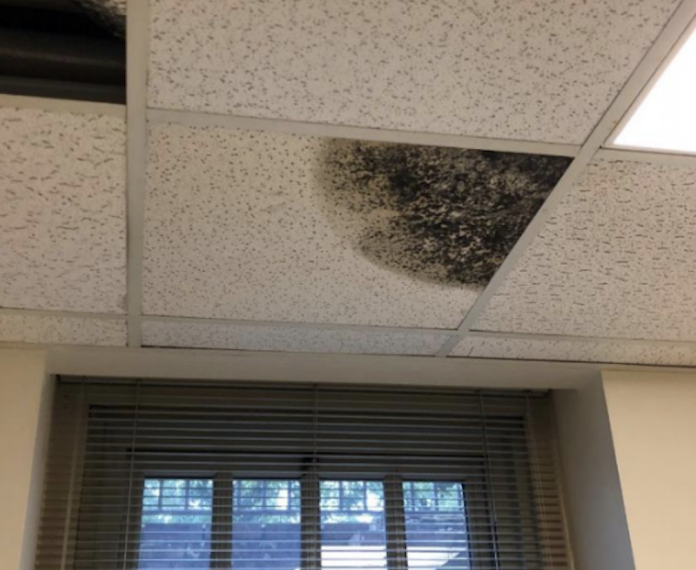
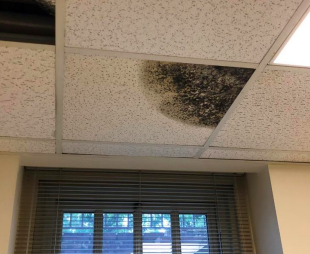
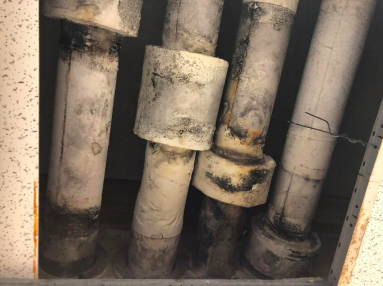
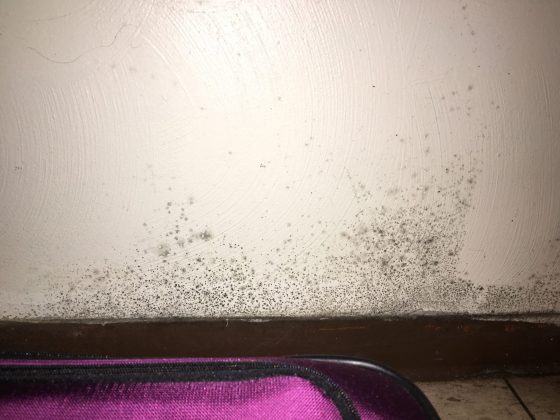
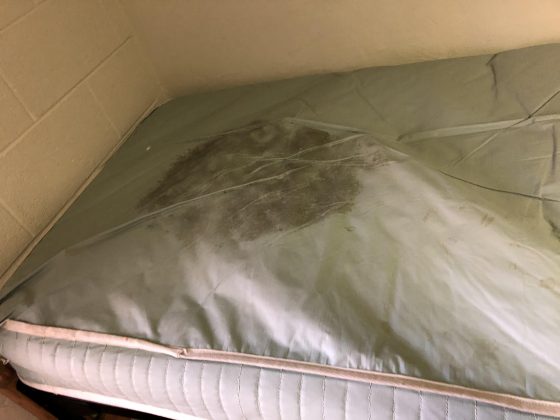
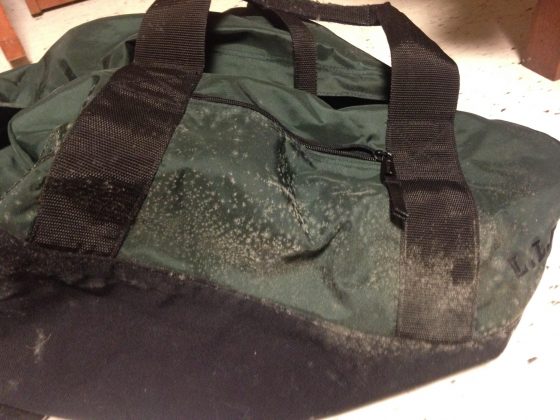
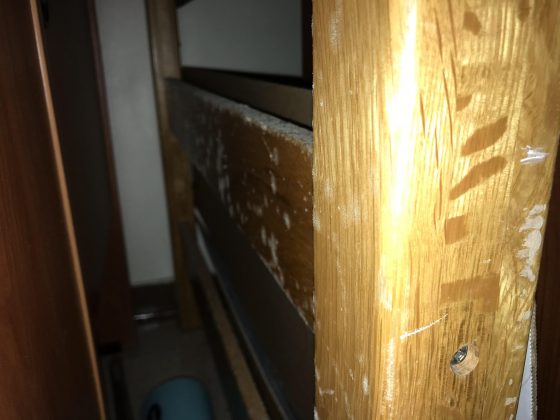
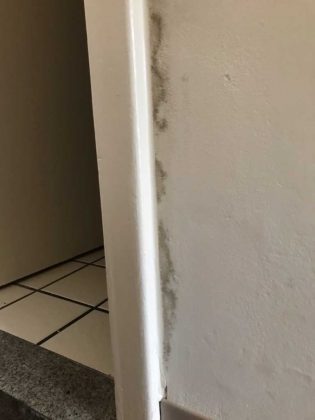
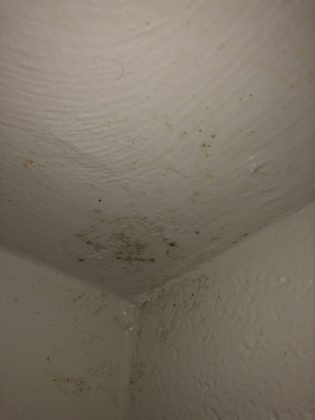
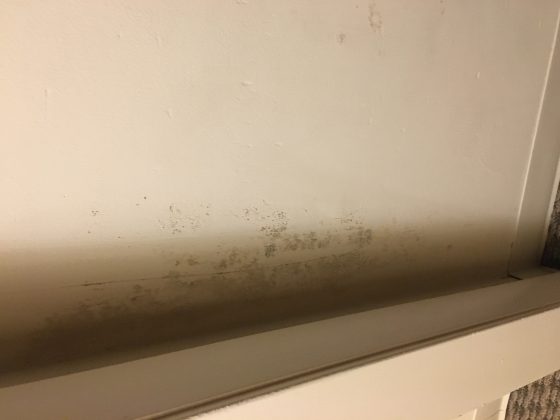
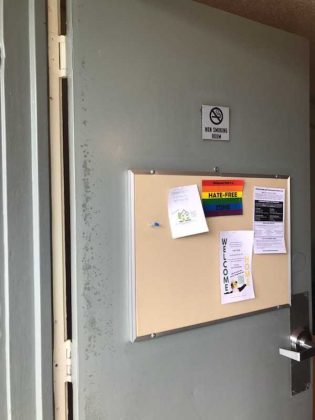
[…] with a shotty record and high pricetag, in favor of ever-increasing on-campus construction despite moldy residence halls, broken dining hall appliances, and limited access to facilities goes to show how the university […]